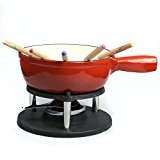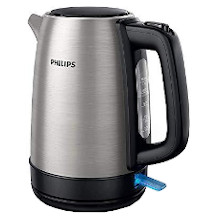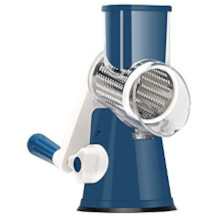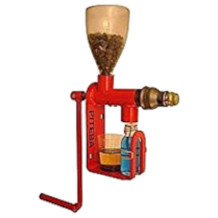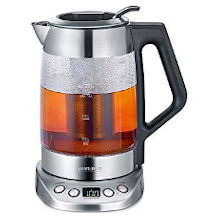Hand mixer purchasing advice: how to choose the right product
- The most important things in a nutshell
- The three basic functions of a hand mixer are stirring, kneading and beating ingredients. Sometimes it can also be used as a hand blender.
- When deciding what to buy, the motor power is probably the most important factor. 450 watts is the minimum.
- Design and function do not always go hand in hand. In any case, the appliance should be comfortable to hold and have a non-slip surface.
Hand mixers: The kitchen helpers for mixing and kneading
The hand mixer has long since become an indispensable helper in the kitchen. Equipped with various attachments, it is used for mixing and kneading light doughs and whipping cream and sauces. Professional as well as amateur and occasional cooks use the handy appliance especially when things have to be done quickly or when the presettable angles of a food processor cannot produce the desired mixing effect.
The design
The hand mixer helps cooks and bakers to quickly process a mass that they have previously mixed in a pot or bowl. As the name suggests, it is held in the hand during mixing, beating and kneading and held straight down or slightly tilted during operation. The various attachments can be “clipped” into the appliance without effort and remain in place thanks to a fastening mechanism inside, even during heavy mixing work.
The main differences are in the attachments. Although Bosch and Braun have repeatedly tried to reinvent the handle, the machines are still similar in design. There are several switches on the upper front that can be flipped with a finger during blending. Users use them to set the speed of the process. The handle is also located on the top. The upper back is reserved for the power connection, the lower front for connecting the attachments.
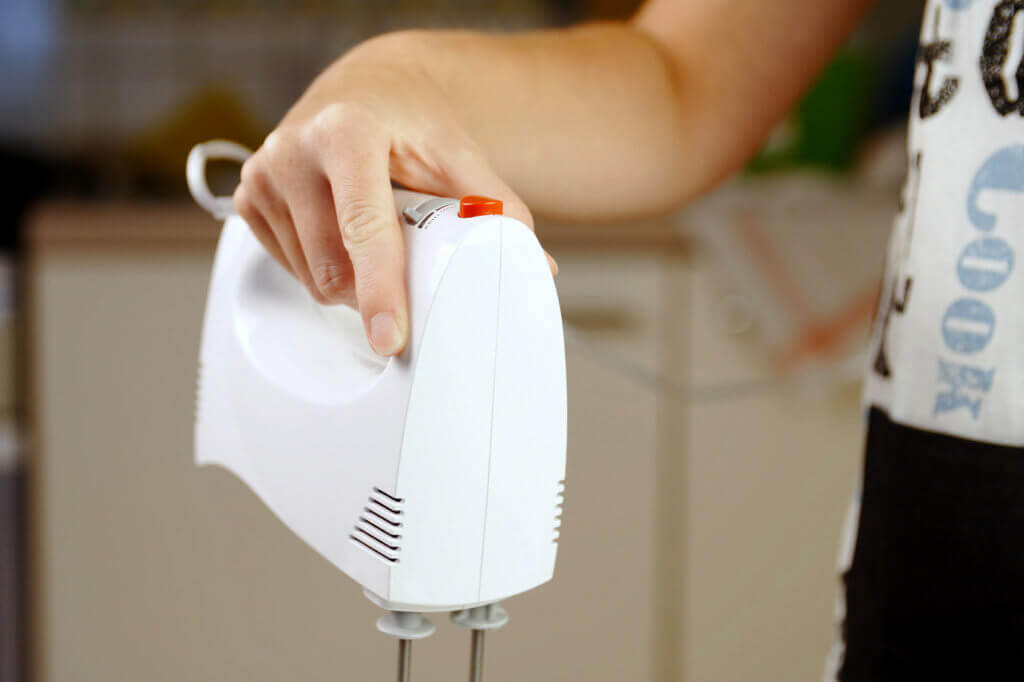
All hand mixers also have a button that releases the wand attachments. The workmanship and positioning of this button says a lot about the quality of the appliance. The more similar the button is to the switch for starting the appliance, the higher the risk that users, instead of starting the mixing process, release the sticks so that they end up in the mixture thanks to the ejection mechanism. Especially doughs and liquids that should not come into contact with hands or grease (the bars need to be oiled regularly) before the mixing process is finished suffer from this. Due to the relatively high weight of the metals used, they quickly disappear into the mixture. More practical are knobs that cannot be pushed through without effort and are clearly distinguishable both visually and haptically.
One-handed operation required
All knobs on a hand mixer can be operated with one hand. This is also necessary because the other hand usually holds the bowl or pot in which the mixing and beating takes place.
How it works
The hand mixer has a motor that makes the two mixing sticks on the underside rotate. Depending on the model, the attachments rotate in the same direction or offset from each other. Stirring mixes the ingredients and kneads doughs. The fact that the chef holds the appliance in his hand has several advantages: for one thing, he can determine exactly when the appliance works or stops. For example, foams can be brought to perfection. Secondly, the appliance is extremely mobile. Weighing no more than half a kilo in some cases, the hand mixer can be moved around freely in the kitchen, making it possible to mix directly in the pot or above the worktop.
Comparison: hand mixer vs. food processor
The way the hand mixer works is reminiscent of the closely related food processor. It also has a head with various attachments for mixing, kneading and whipping. However, food processors require users to use a bowl that fits snugly into the machine. Many appliances also do not handle hot liquids.
The hand mixer, on the other hand, is flexible. Even the inexpensive models can work with hot mixtures. However, cooks should exercise caution and use a splash guard. This is also one of the disadvantages compared to the food processor, because hand mixers splash much more than food processors. The reason for this is the manual operation. While the food processor always uses the same angle and has been perfected to hold the mass in the appropriate bowl, users dip the hand mixer sometimes superficially, sometimes deeply, hold it at an angle or straight and thus change the direction in which the liquid mass moves.
The different attachments
Since the hand mixer is not a particularly complex device, it is offered by cheap and noname manufacturers for as little as ten euros. It is the workmanship of the mixing and kneading attachments that makes the difference in handling and determines how well the appliance does its job. The lower the power of the motor, the more flexible the stirring bars must be. Stainless steel mixing and kneading sticks are not always the best solution. Many attachments use a plastic thread to avoid the problem of oiling.
The attachments can be roughly divided into three types of function:
- Stirring attachments: A stirring attachment mixes ingredients together. It comes in a variety of designs, all of which attempt to reinvent stirring. However, classic four-sided stirrers and open paddles with momentum boosters work particularly well. It is important to note that only liquids and powders that are easy for the attachments to cut through can be mixed. After all, with their rounded edges, they cannot crush ingredients.
- Kneading attachments: For kneading, most hand mixers use dough hooks. A few models use a kind of kneading paddle, but these imitate more the shape and function of a dough scraper and keep throwing the dough over each other. The classic dough hook ensures that the dough is moved in the bowl through various rotational movements. It is not possible to use it without a bowl.
- Whipping attachments: To whip cream and sauces, whisks are used in a hand mixer. The more plastic is used in the whisk attachments, the better the end result, because it is the foams in particular that react sensitively to fat and build-up. Correct whipping is only possible with equipment that achieves fast rotations through a powerful motor.
Special design: Use as a hand blender
A few companies thought of another purpose for the hand mixer and designed it so that it can be used upside down as a hand blender. The hand blender attachment, which is used for blending or mashing, is inserted at the front. Such a design is known from Philips, for example. The disadvantages compared to a conventional hand blender outweigh the disadvantages, however, because users still have to hold a hand blender by the horizontal handle, which only runs vertically, which is cumbersome for this application.
Some Bosch appliances can also be connected to the head of a food processor so that they do not have to be held in the hand for too long. However, this loses the flexibility of the hand mixer. Compared to the simple hand mixer, this further development is also impractical for quick use.
What matters when buying
Looking at the selection of hand mixers, hobby cooks and bakers often think they can’t go wrong when buying one. After all, the appliances are very similar in appearance and design. The only differences are in the colour design. However, choosing the right hand mixer is not that easy.
If you want to choose a model, you should first know for which activities you need the appliance. Most hand mixers can mix and whip all liquids without any problems. When it comes to kneading, however, especially light appliances with a low-power motor fail quickly. Besides the motor power, there are other factors that play a role in the purchase decision. We have compiled the most important criteria below.
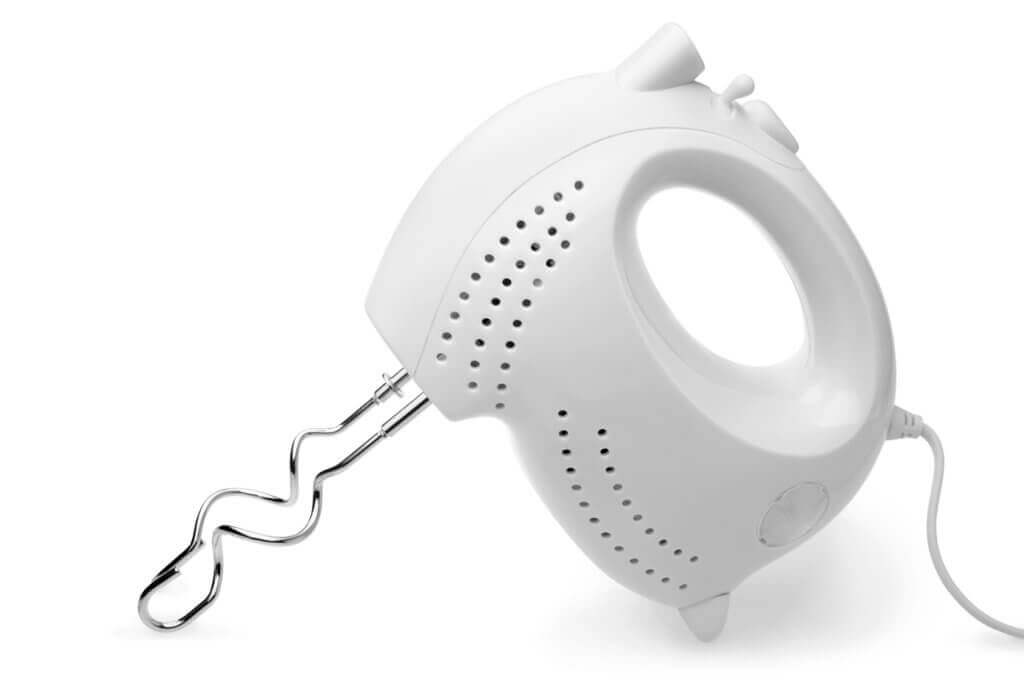
The motor power
When buying a hand mixer, the first thing you should look at is the motor power, because many manufacturers cut corners here. Although this reduces the price and makes the appliance more attractive for beginners, an appliance with a low-power motor is almost useless as soon as it has to knead a dough. Foams are also not whipped sufficiently if the motor does not provide minimum power.
Inexpensive models are equipped with a motor of no more than 450 watts. This power is only sufficient for normal stirring at various speed levels. Philips and other brand manufacturers, on the other hand, rely on motors with a power of up to 750 watts. The appliances consume a little more power; however, this is hardly significant for a few minutes of use per mixing process. 750 watts are enough to knead a dough and – if available – to use chopping attachments.
The rotation of the attachments
To mix a dough smoothly and then knead it, you need more than a simple one-sided rotation. Kitchen machines therefore ideally have a rotation on two different rails that runs in opposite directions so that the hooks do not turn the dough in. With a hand mixer, this is often dispensed with, as the mixing function is the main focus.
If you are looking for a powerful hand mixer, a slightly offset or opposite rotation is best. The distance between the attachments should also be as small as possible so that solid ingredients and doughs are not drawn in.
The equipment
An important part of the purchase decision is the question of which attachments are actually necessary. The more attachments and functions there are, the less the manufacturer focuses on basic functionality. So if only mixing, beating and kneading attachments are needed, consumers should decide against additional chopping attachments, blending sticks and similar accessories and choose a simple hand mixer with sufficient motor power that can handle these three functions excellently.
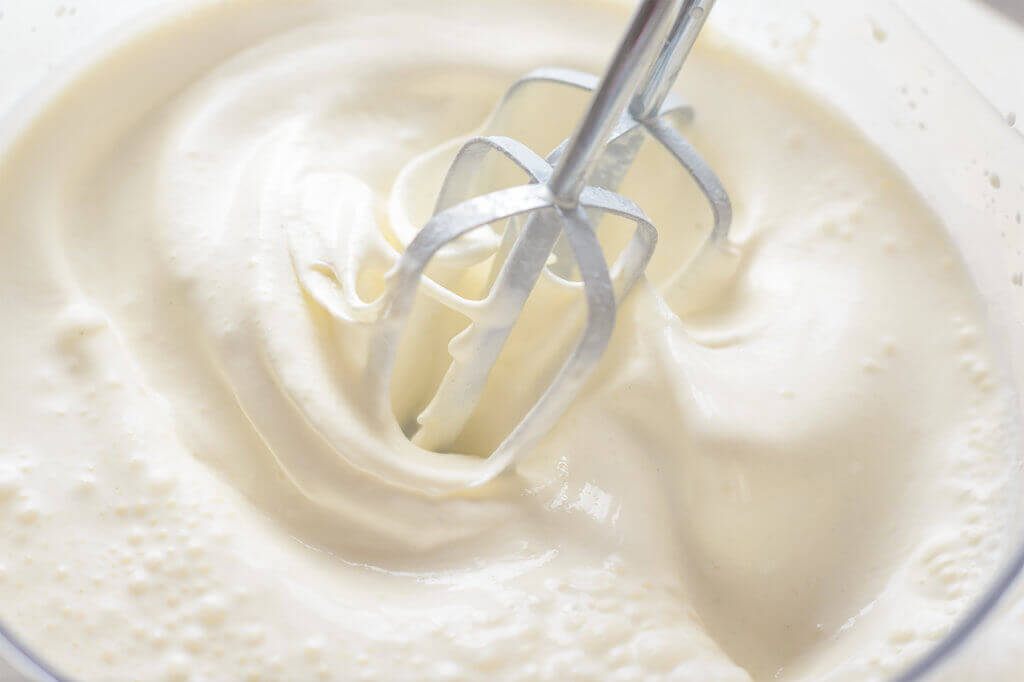
Design and ergonomics
The more often the hand mixer is used, the more important the ergonomic design of the appliance. Heavy hand mixers work better for heavy ingredients. However, they can only be held securely in the hand for a long time if the design fits. The handle should either fit the fingers or have a non-slip coating. Some users see it differently: they focus on easy cleaning and therefore a continuous material with as few special surfaces as possible.
Design also includes colour. Bosch appliances in particular are available in many different colours. However, the colour design is always a matter of taste. Besides, most users put the hand mixer back in the cupboard after use anyway, so it does not necessarily have to match the rest of the kitchen design.
Ease of use and complexity
The hand mixer is operated with a few buttons and one-handed with the hand that is holding it. In this respect, it should be as simple as possible. Hand mixers that rely on particularly small buttons and switches, which are also easy to activate, tend to get in the way of functionality. Ideally, the buttons and control panels on a hand mixer are self-explanatory and labelled in large letters. Colour coding and haptic lift-off of the ejector knob are also practical.
Care and cleaning
Ideally, the hand mixer should be cleaned after each use. Almost all models are made of plastic, which, when wiped with a damp cloth, releases any build-up. Special attention should be paid to the openings for the attachments. This is where dirt accumulates that should never get into the next dish.
The attachments are made of stainless steel, sometimes with high-quality coatings, and plastic. The fewer turns and subdivisions there are, the easier it is to clean the rods and hooks. Warm water and a little washing-up liquid are usually sufficient. Some attachments are even dishwasher safe, depending on the manufacturer’s specifications.
Warranty and lifespan
In the case of particularly inexpensive appliances, consumers can assume that the lifespan of the motor and the attachments will suffer from the simple workmanship. These appliances usually only reach the age of their warranty, so they will not last more than two years. Manufacturers of high-quality appliances not only provide comprehensive support, but often offer all attachments and components for replacement. So if you want to buy sustainably and use your appliance for a long time, you should opt for a hand mixer from 30 euros upwards. In the price range below that, manufacturers often use particularly cheap plastic.
Another warranty issue in the context of inexpensive appliances concerns the coatings of the attachments. The attachment must not release any colour or material particles during mixing and kneading. Otherwise, the coating is not suitable for long-lasting kitchen work. To minimise the health risk, such attachments should be disposed of directly.

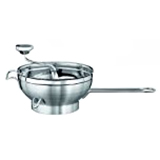
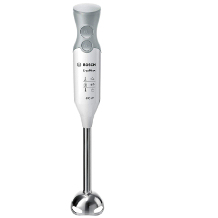
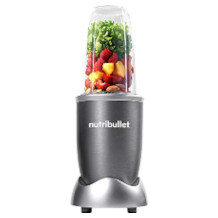
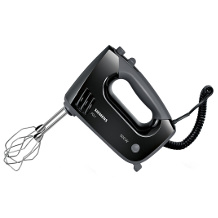
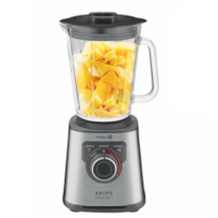

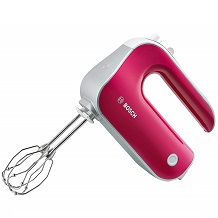
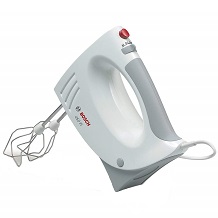
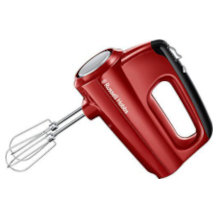
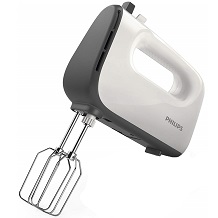

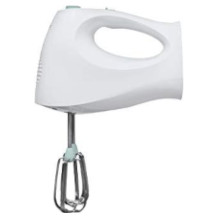
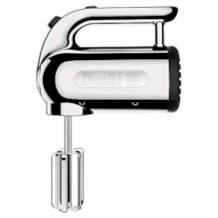


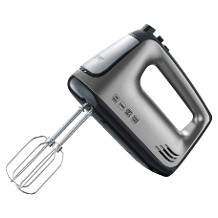
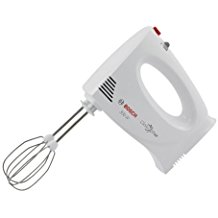
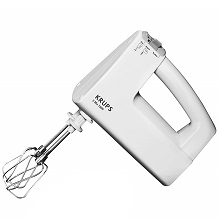
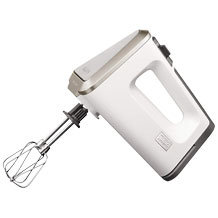
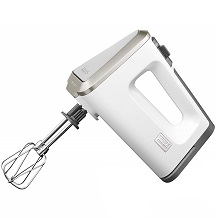
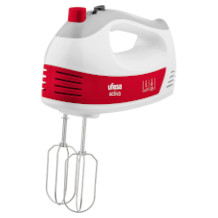
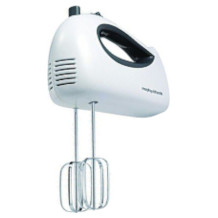
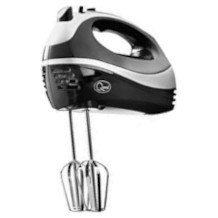
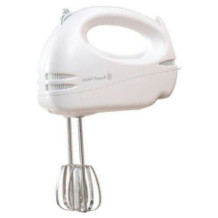
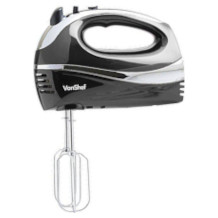
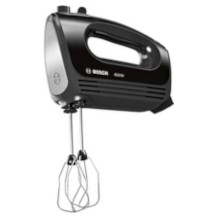

 1,120 reviews
1,120 reviews



